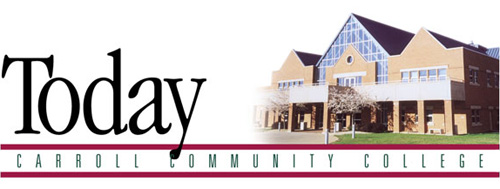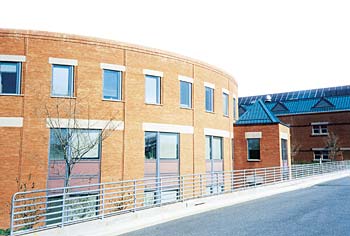
![]()
Contents
Trustees Receive Institutional Effectiveness Report
Better Freshman Year to Highlight Technology, Value
National Survey Finds Community Colleges Key in Technology Economy
![]()
National Survey Finds Community Colleges Key in Technology Economy
Two-year colleges across the nation are playing a critical role in keeping America’s industries competitive and have become the provider of choice for computer training, according to national survey findings released April 4th in Washington, DC.
Conducted jointly by the American Association of Community Colleges (AACC) and ACT, the “Faces of the Future” survey examined a nationally representative sample of both credit and non-credit students from the 10.4 million students enrolled in the nation’s 1,132 community and technical colleges. Among key findings were:
- Students from 18 to 80 are turning to community colleges for computer-related education, giving the colleges a critical role in narrowing the “digital divide.” Gaining computer technology skills was reported as a major reason for attending for a fifth of all credit respondents. This was especially true for first-generation students, single parents, and unemployed individuals, with a fourth of each group saying gaining computer skills was paramount among their reasons for choosing a community college . The percentage of students seeking computer skills increased with age: 24 percent of students aged 26-39; 32 percent of students aged 40-59; and 35 percent of students aged 60 or older cited computer training as a major reason for attending.
- Community colleges are a critical link in producing the workers needed to fuel the exploding information technology industry. One in ten noncredit students who reported they were training for a new career were studying in a computer or communications- related field, including 16 percent of students aged 40-59. Community colleges are major providers of the training needed to prepare for MCSE (Microsoft Certified Systems Engineer), MCP (Microsoft Certified Professional), CCNA (Cisco Certified Network Associate), and A+ Certification (sponsored by the Computing Technology Industry Association).
- Students who have already attained advanced degrees choose community colleges to upgrade skills. Almost one-third (28 percent) of noncredit students at respondent colleges had already earned bachelor’s, master’s, or doctoral degrees.
- Community colleges play a substantial role generally in preparing students for today’s workplace. Among credit students, 60 percent said their major reason for taking classes was to meet occupational requirements. Nearly half of full-time, employed credit students said that increasing their earning power was a major motivator, and 37 percent said a major reason for attending was to make a career change. Among noncredit students, 13 percent were taking classes to meet employer requirements, a finding partly reflecting the steadily increasing amount of customized training provided to businesses under contracts with community colleges.
- In a decade of steeply rising university tuitions, community colleges are the best and sometimes only hope to ensure career and earning competitiveness for the least skilled and most economically disadvantaged. Over half of community college students are first-generation students whose parents did not attend college. These students are often attending part-time and seeking job-specific skills. Among first-generation students, 22 percent reported household incomes of less than $20,000.
- Four out of five students from respondent colleges reported complete satisfaction with their community college experience.
“That statistic is a ringing endorsement from students,” said ACT President Richard L. Ferguson. “Our survey points to the effectiveness of the community college curriculum and its impact on helping people achieve their life and career goals. Community colleges are building the skills of the nation’s workforce, helping bridge the digital divide and giving people a convenient and cost-effective way to pursue lifelong learning.”
The “Faces of the Future” survey was conducted in fall 1999. More than 100,000 credit and noncredit students at 245 community colleges in 41 states responded. Analysis of geographic location, college size, and urban/rural setting indicated that respondent colleges were generally representative of all community colleges. To adjust for minor discrepancies, ACT applied statistical weights to the data to more accurately reflect a national picture. (Methodological details are available from ACT upon request.)
AACC sees the new data as validation of the greatly expanded and significantly underfunded value of the community college mission. Although the colleges enroll almost half of all U.S. undergraduates, they receive less than 30 percent of state and local higher education dollars. In addition, community colleges enroll higher percentages of women, minority students, older adults, and the disabled — groups the U.S. Bureau of Labor Statistics predicts will provide most new workers in the future.
“Over their 100-year history, community colleges have significantly expanded their role in keeping the great engine of this nation running,” said AACC President David Pierce. “But they have often gone underfunded and unrecognized for the contribution they make to the academic enterprise. This study documents the essential and, in the case of computer literacy, leading role the colleges are playing.”
AACC and ACT plan to make the national survey an annual activity to provide ongoing data about this largest sector of higher education.
ACT, Inc. is an independent, not-for-profit organization that provides assessment, research, information and program management services in the broad areas of education planning, career planning, and workforce development.
The American Association of Community Colleges is a national organization representing more than 1,100 community and technical colleges and their 10.4 million students. The colleges enroll almost half of all U.S. undergraduates.

![]()